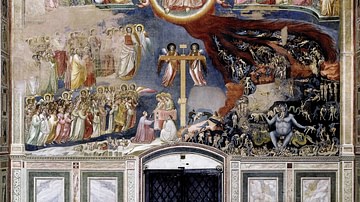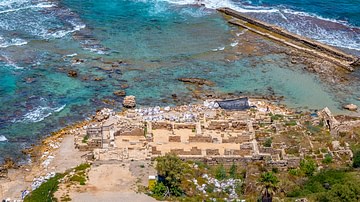Search Articles
Browse Content (p. 1)

Article
Hamilton-Burr Duel
The Hamilton-Burr duel was fought between Alexander Hamilton and his political rival Aaron Burr at 7 a.m. on 11 July 1804, in Weehawken, New Jersey. It resulted in the death of Hamilton, who received a mortal wound to the abdomen, and the...

Article
Sermon on the Mount
The Sermon on the Mount in the Gospel of Matthew (chapters 5, 6, and 7) became a foundational element of the religion of Christianity. The sermon is based on the traditions of Judaism and the Law of Moses, but with added interpretations of...

Article
Nativity of Jesus
The nativity of Jesus of Nazareth is told in the gospels of Matthew and Luke. In Christian theology, the existence of two nativity stories by two different writers provided a prooftext for the historicity of the event. However, the two versions...

Article
The Danish Conquest of England
The Danish conquest of England was not a singular event, but a series of large Viking invasions of England between 1013 and 1016, which eventually overthrew the native English dynasty. As a result, four kings from the House of Denmark ruled...

Article
Interview: French Fashion during the German Occupation (1940-1944)
In 2024, France is celebrating the 80th anniversary of the Liberation (1944), and as part of a series of conferences organised by the Société archéologique et historique de Beaugency, Catherine Join-Dieterle, Doctor in History of Art and...

Article
Angels in Christianity
Angels in Christianity act as messengers of God, bring good news, and help believers. Their role developed from the function of angels in ancient Judaism but continued to evolve as Christianity became a separate religion. Jewish &...

Article
Angels in Ancient Judaism
The concept and function of angels in ancient Judaism were some of the many elements incorporated from contemporary cultures and religious views. The Hebrew malakh was translated into the Greek angelos, both of which indicated not their nature...

Article
The Red Eagles
The Red Eagles is a Cheyenne hero tale featuring the popular champion Mok-so-is, the child hero best known from the legend Found in the Grass, popular among many Algonquin-speaking nations including the Cheyenne, Arapaho, and Blackfoot. The...

Article
Found In the Grass
Found In the Grass is a legend of the Algonquian-speaking nations of the Plains Indians and one of the most famous. The story is told in many different versions, but the best-known comes from the Cheyenne and features the child hero Mok-so-is...

Article
Caesarea Maritima's Role in the Roman Empire
Caesarea Maritima, the city Herod the Great (r. 37-4 BCE) built for Rome on the southeastern coast of the Mediterranean served as the Roman Empire's powerbase of operations both commercially and militarily. With Rome's ultimate goal of adding...